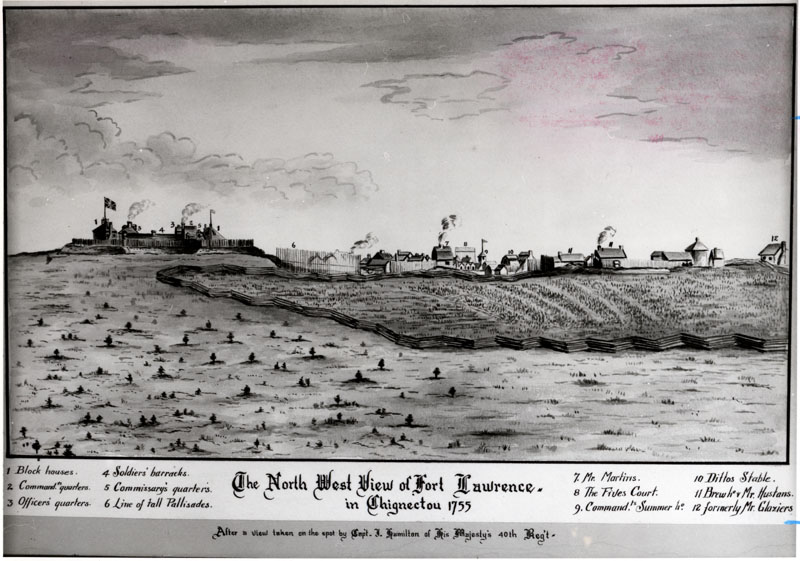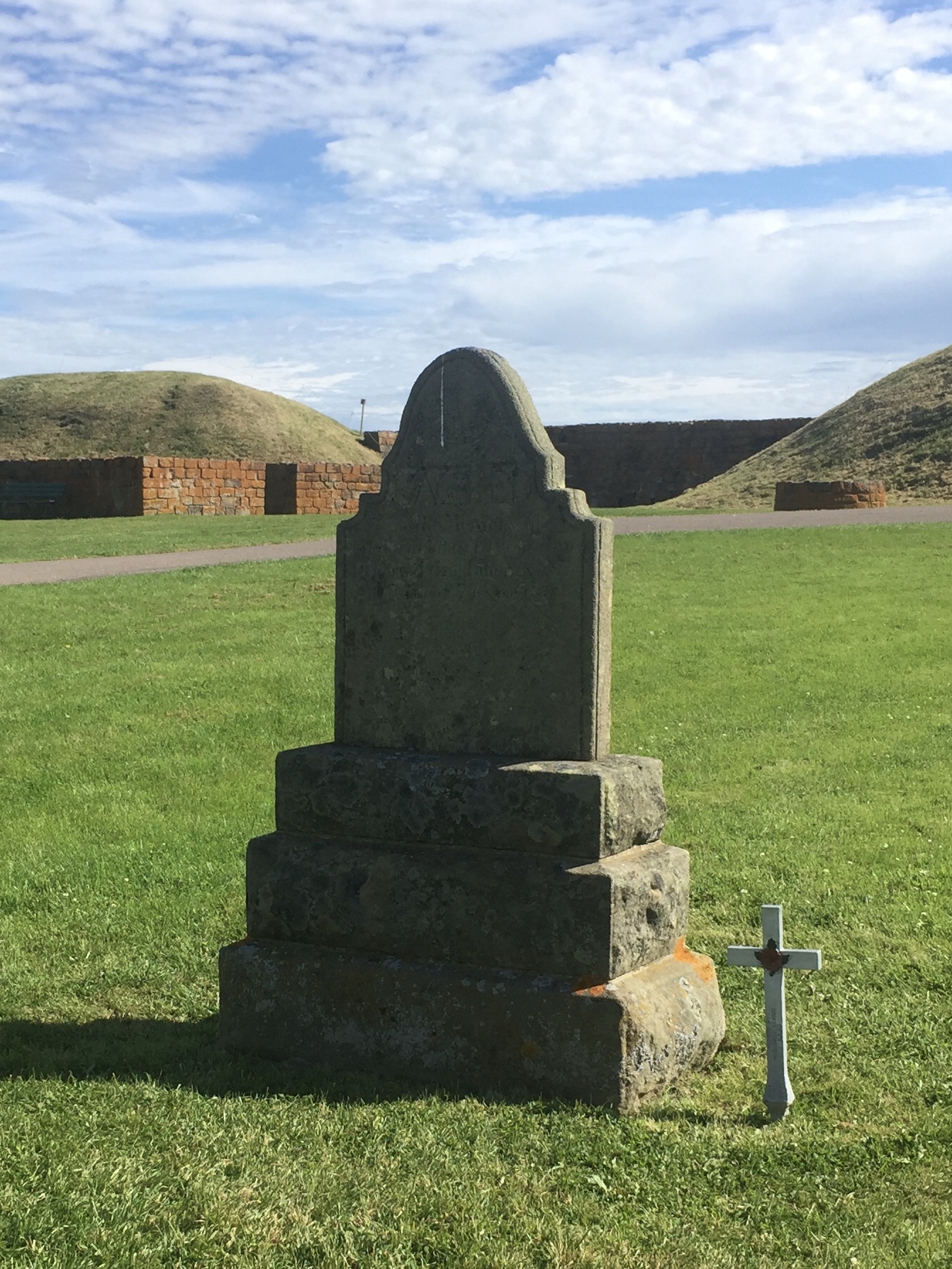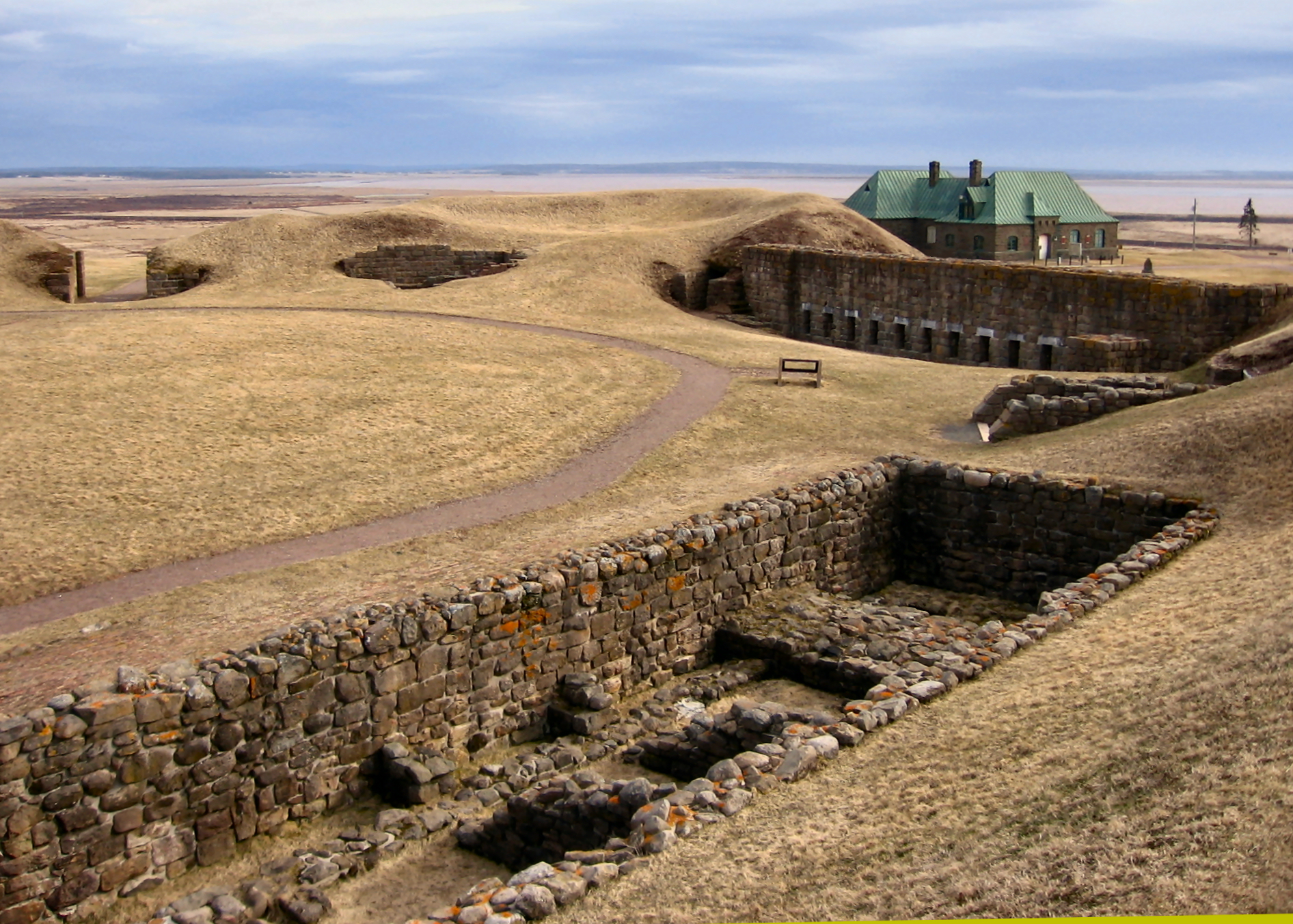|
Point De Bute, New Brunswick
Point de Bute is an unincorporated community in Westmorland County, New Brunswick, Canada. The local service district of Pointe de Bute takes its name from the community but uses a different spelling. History The Acadian Pierre Buhot settled here in the late 1600s, and the original name was Pont à Buhot which evolved, via Pont à Buot to the current name. Opposite his house was a bridge over the Missaguash River, leading to the Tantramar Marsh. It was near the outlet of a stream, Rivière à l'Ours and a redoubt, which was the first point of attack by Monckton's army in 1755 as it advanced from Fort Lawrence to cross the Missaguash river on the way to attack Fort Beausejour. Notable people *Point de Bute is the birthplace of the British Columbian transportation pioneer Stephen Tingley, *birth place of World War I flying ace Albert Desbrisay Carter Albert Desbrisay Carter DSO & Bar (2 June 1892 – 22 May 1919) was a Canadian World War I flying ace credited with ... [...More Info...] [...Related Items...] OR: [Wikipedia] [Google] [Baidu] |
New Brunswick
New Brunswick (french: Nouveau-Brunswick, , locally ) is one of the thirteen provinces and territories of Canada. It is one of the three Maritime provinces and one of the four Atlantic provinces. It is the only province with both English and French as its official languages. New Brunswick is bordered by Quebec to the north, Nova Scotia to the east, the Gulf of Saint Lawrence to the northeast, the Bay of Fundy to the southeast, and the U.S. state of Maine to the west. New Brunswick is about 83% forested and its northern half is occupied by the Appalachians. The province's climate is continental with snowy winters and temperate summers. New Brunswick has a surface area of and 775,610 inhabitants (2021 census). Atypically for Canada, only about half of the population lives in urban areas. New Brunswick's largest cities are Moncton and Saint John, while its capital is Fredericton. In 1969, New Brunswick passed the Official Languages Act which began recognizing French as an ... [...More Info...] [...Related Items...] OR: [Wikipedia] [Google] [Baidu] |
Fort Lawrence
Fort Lawrence was a British fort built during Father Le Loutre's War and located on the Isthmus of Chignecto (in the modern-day community of Fort Lawrence). Father Le Loutre's War Despite the British Conquest of Acadia in 1710, Nova Scotia remained primarily occupied by Catholic Acadians and Mi'kmaq. Father Le Loutre's War began after Edward Cornwallis arrived to establish Halifax with 13 transports on June 21, 1749. The British quickly began to build other settlements. To guard against Mi'kmaq, Acadian and French attacks on the new Protestant settlements, British fortifications were erected in Halifax (1749), Bedford (Fort Sackville) (1749), Dartmouth (1750), Lunenburg (1753), and Lawrencetown (1754). Within 18 months of establishing Halifax, the British also took firm control of peninsula Nova Scotia by building fortifications in all the major Acadian communities: present-day Windsor ( Fort Edward); Grand-Pré (Fort Vieux Logis) and Chignecto (Fort Lawrence). A British fort ... [...More Info...] [...Related Items...] OR: [Wikipedia] [Google] [Baidu] |
List Of Communities In New Brunswick
This is a list of communities in New Brunswick, a province in Canada. For the purposes of this list, a community is defined as either an incorporated municipality, an Indian reserve, or an unincorporated community inside or outside a municipality. Cities New Brunswick has eight cities. Indian reserves First Nations Parishes New Brunswick has 152 parishes, of which 150 are recognized as census subdivisions by Statistics Canada. Local service districts Rural communities New Brunswick has seven rural communities. Towns and villages New Brunswick has 27 towns and 66 villages. Neighbourhoods Local service districts Other communities and settlements This is a list of communities and settlements in New Brunswick. A–B ; A * Aboujagne * Acadie * Acadie Siding * Acadieville * Adams Gulch * Adamsville * Albert Mines * Albrights Corner * Alderwood * Aldouane * Allainville * Allardville * Allison * Ammon * Anagance * A ... [...More Info...] [...Related Items...] OR: [Wikipedia] [Google] [Baidu] |
Thomas Dixson
Thomas Dixson (also Thomas Dickson, c. May 3, 1733 – November 8, 1809) was a British colonial militiaman and politician serving in Canada. Early life The year and location of Thomas Dixson's birth is not clear. As a young child, the Dixsons moved to Norwich, Connecticut. French and Indian War During the French and Indian War, Dixson moved to Fort Cumberland, Nova Scotia, soon after, and served as a militiaman in the capture of Fort Beauséjour in 1755. Dixson also served with Amherst at Montreal in 1760 and with Monckton in Havana in 1762. American Revolution In 1776, during the American Revolutionary War, a band of revolutionaries led by Jonathan Eddy attempted to capture Fort Cumberland (Fort Beauséjour) as part of an effort to provoke Nova Scotia into joining the revolution against British control of the colonies. To resist this siege, known as the Battle of Fort Cumberland, Captain Dixson sailed himself and three volunteers in a small open boat across the ... [...More Info...] [...Related Items...] OR: [Wikipedia] [Google] [Baidu] |
Edwin Colpitts
Edwin Henry Colpitts (January 19, 1872 – March 6, 1949) was a communications pioneer best known for his invention of the Colpitts oscillator. As research branch chief for Western Electric in the early 1900s, he and scientists under his direction achieved significant advances in the development of oscillators and vacuum tube push–pull amplifiers. In 1915, his team successfully demonstrated the first transatlantic radio telephone. Colpitts died at home in 1949 in Orange, New Jersey, United States and his body was interred in Point de Bute, New Brunswick, Canada. He was survived by his wife Grace Penney Colpitts and his son Donald B. Colpitts. Education and career Born in Point de Bute, New Brunswick, he began his education at Mount Allison University and was later a teacher and school principal in Newfoundland. In 1895 he entered Harvard University where he studied physics and mathematics. He received a BA in 1896 and a Master's degree in 1897 from that institution. He re ... [...More Info...] [...Related Items...] OR: [Wikipedia] [Google] [Baidu] |
Albert Desbrisay Carter
Albert Desbrisay Carter DSO & Bar (2 June 1892 – 22 May 1919) was a Canadian World War I flying ace credited with 28 victories.www.thearodrome.com Retrieved 2 September 2008. Early life and career Albert Desbrisay Carter was born in . Nicknamed "Nick", Carter was student at Mount Allison University, Sackville, N.B. and a pre-war officer in the Canadian militia. Not long after beginning his studies he joined the local infantry company, F Company, 74th Regiment (The New Brunswick Rangers) and was granted a commission as lieutenant in April 1912. In November 1914 he was se ...[...More Info...] [...Related Items...] OR: [Wikipedia] [Google] [Baidu] |
Stephen Tingley
Stephen Tingley (September 13, 1839 - October 9, 1915) was a stagecoach driver and one of the original owners of the pioneer transportation company BC Express that served the Cariboo region in British Columbia, Canada for 60 years, from 1860, when it was first founded as Barnard's Express, until 1920, when it ceased its sternwheeler service. For twenty years Stephen Tingley was known as the "Whip of the Cariboo" and drove the BC Express stagecoaches between Yale and Cache Creek, over what was then one of the most hazardous roads in North America. Tingley Creek, which flows north-east into the Fraser River near Marguerite is named for him. Career Born in Point de Bute near Sackville, New Brunswick, Stephen Tingley came to British Columbia in 1861 and tried his luck at mining during the Cariboo Gold Rush before returning to Yale in 1864 and starting a harness shop, having apprenticed as a saddler in New Brunswick. In 1864, he hired on as a driver for Francis Jones Barnard. In 18 ... [...More Info...] [...Related Items...] OR: [Wikipedia] [Google] [Baidu] |
British Columbian
British may refer to: Peoples, culture, and language * British people, nationals or natives of the United Kingdom, British Overseas Territories, and Crown Dependencies. ** Britishness, the British identity and common culture * British English, the English language as spoken and written in the United Kingdom or, more broadly, throughout the British Isles * Celtic Britons, an ancient ethno-linguistic group * Brittonic languages, a branch of the Insular Celtic language family (formerly called British) ** Common Brittonic, an ancient language Other uses *''Brit(ish)'', a 2018 memoir by Afua Hirsch *People or things associated with: ** Great Britain, an island ** United Kingdom, a sovereign state ** Kingdom of Great Britain (1707–1800) ** United Kingdom of Great Britain and Ireland (1801–1922) See also * Terminology of the British Isles * Alternative names for the British * English (other) * Britannic (other) * British Isles * Brit (other) * B ... [...More Info...] [...Related Items...] OR: [Wikipedia] [Google] [Baidu] |
Fort Beausejour
A fortification is a military construction or building designed for the defense of territories in warfare, and is also used to establish rule in a region during peacetime. The term is derived from Latin ''fortis'' ("strong") and ''facere'' ("to make"). From very early history to modern times, defensive walls have often been necessary for cities to survive in an ever-changing world of invasion and conquest. Some settlements in the Indus Valley civilization were the first small cities to be fortified. In ancient Greece, large stone walls had been built in Mycenaean Greece, such as the ancient site of Mycenae (famous for the huge stone blocks of its 'cyclopean' walls). A Greek '' phrourion'' was a fortified collection of buildings used as a military garrison, and is the equivalent of the Roman castellum or English fortress. These constructions mainly served the purpose of a watch tower, to guard certain roads, passes, and borders. Though smaller than a real fortress, they acted ... [...More Info...] [...Related Items...] OR: [Wikipedia] [Google] [Baidu] |
Robert Monckton
Lieutenant-General Robert Monckton (24 June 1726 – 21 May 1782) was an officer of the British Army and colonial administrator in British North America. He had a distinguished military and political career, being second in command to General James Wolfe at the battle of Quebec and later being named the Governor of the Province of New York. Monckton is also remembered for his role in a number of other important events in the French and Indian War (the North American theatre of the Seven Years' War), most notably the capture of Fort Beauséjour in Acadia, and the island of Martinique in the West Indies, as well as for his role in the deportation of the Acadians from British controlled Nova Scotia and also from French-controlled Acadia (present-day New Brunswick). The city of Moncton, New Brunswick, (about west of Fort Beauséjour) and Fort Monckton in Port Elgin, New Brunswick, are named for him. A second more important Fort Monckton in Portsmouth, England, is also named for him ... [...More Info...] [...Related Items...] OR: [Wikipedia] [Google] [Baidu] |
Westmorland County, New Brunswick
Westmorland County (2016 population: 149,623) is a county in New Brunswick, a province of Canada. It is in the south-eastern part of the province. It contains the fast-growing commercial centre of Moncton and its northern and eastern suburbs. Also located in the county are the university town of Sackville and the tourist destination of Shediac. Westmorland County is centrally located in the Maritimes and is New Brunswick's most populous county. Fishing and tourism are important industries along the Northumberland Strait shore, and there is some mixed farming in the Petitcodiac River Valley and in the Tantramar Marsh region. The city of Moncton accounts for half of the county's population and has developed as a major transportation, distribution, commercial and retail centre. Dorchester is the historic shire town. Origins The county, once a part of Cumberland County, Nova Scotia, was one of the original eight counties delineated shortly after the creation of the British col ... [...More Info...] [...Related Items...] OR: [Wikipedia] [Google] [Baidu] |
Redoubt
A redoubt (historically redout) is a fort or fort system usually consisting of an enclosed defensive emplacement outside a larger fort, usually relying on earthworks, although some are constructed of stone or brick. It is meant to protect soldiers outside the main defensive line and can be a permanent structure or a hastily constructed temporary fortification. The word means "a place of retreat". Redoubts were a component of the military strategies of most European empires during the colonial era, especially in the outer works of Vauban-style fortresses made popular during the 17th century, although the concept of redoubts has existed since medieval times. A redoubt differs from a redan in that the redan is open in the rear, whereas the redoubt was considered an enclosed work. The advent of mobile warfare in the 20th century diminished the importance of stationary defence positions and siege warfare. Historically important redoubts English Civil War During the English Civ ... [...More Info...] [...Related Items...] OR: [Wikipedia] [Google] [Baidu] |




.jpg)


.png)